| © 2022 Black Swan Telecom Journal | • | protecting and growing a robust communications business | • a service of | |
| Email a colleague |
October 2019
PrologMobile’s Simple and Brilliant Plan to Save U.S. MNOs Billions a Year in Recovered Phones & Retained Customers

For decades, revenue assurance pros have discovered "stranded network assets" that deliver big cost savings. And last month we interviewed the McDermott brothers whose one-database inventory system aims to close that gap.
But there’s another crucial asset program to manage: used smartphones. And it’s here where U.S. mobile carriers can save billion of dollars if a carrier's "lost" devices can be better recovered and put back into service.
Welcome to a crucial telecom profit-making activity that most industry veterans know little about. It’s the used mobile device reverse supply chain, a marketplace where carriers and phone maker OEMs (like Apple and Samsung) do business with a few dozen certified specialty firms who diagnose, repair, and data cleanse used phones so they operate like new.
Joining us to teach what he knows is Seth Heine, a reverse supply chain entrepreneur for 20 years and the CEO/Founder of PrologMobile, a neutral third party firm that shares data on used phones, enabling the entire supply chain to become more efficient.
Seth explains the highly interesting process of capturing and refurbishing used mobile phones and Bring Your Own Devices (BYODs) as they are sold or abandoned by users, trafficked to foreign nations, or returned to carriers then redeployed across as many as five network lifecycles before being decommissioned and salvaged for parts — or "mined" for their precious metal content.
Seth also proposed here a simple amnesty plan where users are given a nominal $30 bounty fee when they buy a used phone on Ebay or Amazon and then reactivate this network compatible device on the particular carrier.
| Dan Baker, Editor, Black Swan Journal: Seth, the used mobile phone market is a mystery to your average mobile industry follower, but I understand it’s now key to the health of the industry. What’s happening there? |
Seth Heine: Dan, the market for new mobile phones is really taking a hit these days: demand has dropped dramatically. At Samsung, phone sales are down about 60%. And yet Samsung is out there selling a $2,600 folding phone which will only appeal to a narrow set of early adopters.
Things are almost as bad for Apple, whose iPhone sales are down 40% year-over-year. More and more customers figure the $400 difference between a new iPhone 11 and an iPhone 8 is not worth the price since the improvements are mostly incremental.
The high prices and lack of excitement for the new phones are big reasons why the used mobile phone market is growing at a 10% compound annual rate. Truth is: carriers are quite happy to sell you a refurbished iPhone 6, iPhone 7 or iPhone 8 because it will consume practically the same data as a $1,400 phone. They are also eager to take in Bring Your Own Devices (BYODs) saying, “Show up with your own phone, and we’ll sign you right up.”
The used phones are great for the carriers because they don’t have to subsidize a customer by underwriting a phone. The big money for them is selling the customer a monthly mobile service contract.
| And I understand you personally have a long history in supporting the used mobile phone ecosystem. |
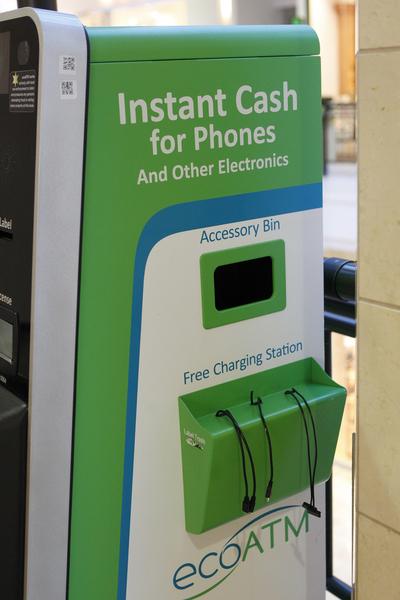
Yes, back in 2008 I co-founded a company called ecoATM that grew to $350 million dollars. We sold that business to Coinstar five years after we founded the company.
Maybe you’ve seen those kiosks in department stores where you put your phone in and get an automated buyback of your phone. I co-invented that system, and those kiosks were the ticket to ecoATM’s success.
A good portion of the phones put in those kiosks are not actually owned by the person who gets paid. They put $300 in their pocket when they sell that phone into the kiosk, but the reality is: that might have been Sprint’s phone, or some other carrier’s asset.
But the trouble is, there’s no way to check with the carriers and see if that phone is on a payment plan or not. Carriers are very secretive about the IMEI numbers on their phones, so there’s no way to know. (NOTE: the IMEI is the unique identifier for every mobile device in the world.)
| Why are users anxious to cash in their expensive smartphones in the first place? |
There are a number of reasons. But the problem often stems from a conflict between the phone customer and the carrier.
If a user fails to make payment on his contract for 60 days, the carrier locks that phone to prevent someone else from putting that phone on the carrier’s network when Sprint (for example) has subsidized that phone for several hundred dollars.
However, even though that phone may be locked on Verizon, the world market is savvy enough to make money on that phone. It can be sold to a guy in Germany, London, Turkey, South Africa, India, China or Russia — and the phone will play nice on GSM networks in those countries, plus a premium will be paid for it because it is effectively unlocked.
My point is this: the practice of locking a phone when somebody fails to pay their bill is actually pushing that valuable phone away from the operator’s network! It directly leads to the device being trafficked in international markets.
| So what can be done to get more used phones returned to the network that first sold them? |
Well this is where PrologMobile’s value proposition begins. We serve as a nexus point for the reverse supply chain for mobile phones.
Whenever a used phone enters the reverse supply chain, it’s sent to credible and certified companies, mostly high volume players who specialize in mobile phone erasure and diagnostics. The role of these firms is good data hygiene: they run each phone through a data erasure process to make sure that no confidential information or photos or whatever are on the phone.
The problem is that each of these companies operate in their own goldfish bowl or silo. For example, our partner MCE Systems touches tens of millions of phones a year. Likewise, another partner, Blancco, also sees tens of millions of phones a year through their system. And the big mobile OEM phone makers such as Apple and Samsung also use these systems.
What we do is query all the OEMs and carriers to figure out if a phone has been flagged as lost or stolen anywhere on the planet. And we also try to determine if that phone has any encumbrances on it: is it locked onto a particular operator’s network, does the customer still owe money on the device?
Billions of dollars-worth of phones per year work their way through our systems and we integrate with this reverse supply chain to help with the diagnostics, and help report on the IMEIs specifically. We see more of these phones than anybody else because our system sits atop all of these other systems. We see the phones that are locked by Sprint, T-Mobile, AT&T, and Verizon and people use our systems to determine if a device has any of these encumbrances that drastically impact its value.
| What are the on-going costs of not having an efficient reverse supply chain and how we get more phones returned to the original carrier? |
Dan, the irony here is that these used phones are worth hundreds of dollars each and because the US operators don’t cooperate with each other, they are losing billions of dollars a year — each.
What we propose is to manage an amnesty program on behalf of the carriers to return as many phones to them as possible with active subscribers. So let me explain step-by-step how used mobile phones are processed and show how we propose to help operators recover these huge losses in used phones:
- Carriers regularly “buy-back” phones that are locked by their competitors. Let’s say Sprint acquires a customer who trades in his old AT&T phone to Sprint in exchange for signing a new mobile contract and getting a Sprint compatible phone.
- The carrier can’t monetize the locked phones of its rivals. If Sprint owns a locked AT&T mobile phone, Sprint can’t do much with it. AT&T would get great value from having that AT&T configured/branded phone returned to them, but Sprint has no incentive to return the phone to AT&T since they are competitors. The best Sprint can do is to sell the AT&T phone — for less than it is worth — to a shop in Hong Kong who fixes the phone with non-OEM parts and sells it on the global market.
- Both carriers end up losing big money by not cooperating in the reverse supply market. So in my example, both AT&T and Sprint lose billions of dollars a year because they won’t share IMEI codes with each other and lack a cooperative third party managed mechanism for getting their own used phones returned to them.
- PrologMobile is positioned in the reverse supply chain to help. We are a third party neutral player who monitors the identity, health, and repairs done on used phones in the global market. And since we analyze more than 100 million devices through our system annually, we are uniquely positioned to see all these phones on a global basis because we run portals that people use to search IMEIs, plus we are integrated into the biggest data erasure and diagnostics companies.
- A carrier-cooperative phone amnesty program solves the problem. All a carrier has to do is register a “bounty” or amnesty fee of $30 on the IMEIs of all the devices the carrier wants returned. Then, with PrologMobile acting as the neutral third party administer of the program, we can increase the number of carrier-locked used phones returned to the carrier each year.
- The $30 bounty fees encourage people to return their phones. The program ensures that the phone — worth several hundred dollars — is returned back to the carrier where a valuable phone is now back in the inventory and is used by a brand new paying customer.
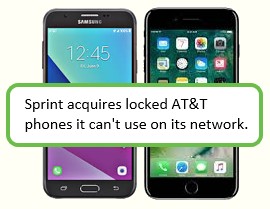
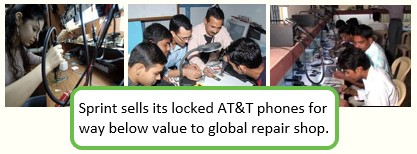

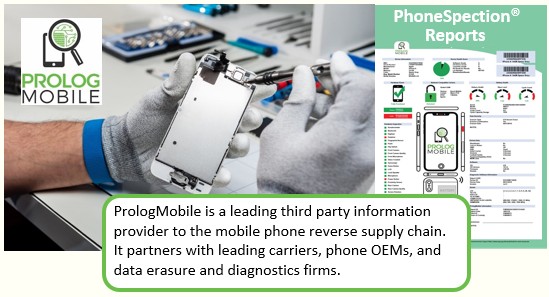

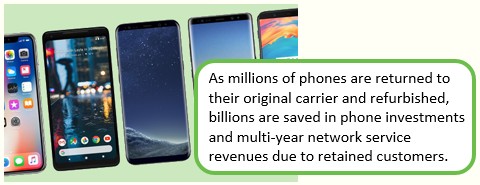
So our proposition is pretty simple. We see all the devices in the reverse supply chain. Everybody wants us to unlock the phones, but we don’t do that because it’s illegal. Instead, we say: “Why not put an amnesty activation code on it.” So instead of breaking the law and helping somebody overseas traffic a lost or a stolen device, let the carrier who sold the device attract it back onto their network and create efficiencies around that.
| Great, so there’s a big case for ensuring the reverse supply chain returns as many phones as possible to the original carrier who sold them. |
Yes, there’s a savings of a couple of hundred bucks per phone. But the more eye popping stat comes from a Forbes article published last year (AT&T To Open Over 1,000 Stores, But That’s Not Even The Real Surprise). The article states the average AT&T mobility customer stays on their network for a decade!
So think about that: a mobile customer has a lifetime value of roughly $7,000 dollars to AT&T. Now it’s easy to get caught up in the billions of dollars worth of device assets we can return, but the greater problem is the lost opportunity that costs tens — maybe hundreds — of billions of dollars of keeping customers on the network. So rather than slam the door on a former customer by locking their phone, why not go with a $30 amnesty program and make it easier for that device, and a new customer to join the network.
Having an organized reverse supply chain in the mobile device business represents tremendous value for mobile operators. For instance, a carrier can monetize a 3-year-old phone that is on its second lifecycle or a 5-year-old phone on its third lifecycle. The money pulled in on those phones is the same as if it were a new $1,500 iPhone or $2,600 foldable Samsung. The same amount of money gets pulled through their coffers every month.
Likewise, Apple makes money when you buy a song at the Apple store: it doesn’t matter if it’s sold on a new phone or a used phone. The same situation occurs with Samsung when the user goes to the Google Play store and buys an app, movie, or music.
The beauty of what we’re proposing is the amnesty offer comes with no expense to the carrier. The only time there is an expense is when the offer is successful. Yes, you pay out a $30 data expense, but that phone may be worth a $300 phone when you convert it to a prepaid phone. And in terms of retaining a customer, that minor $30 expense might enable earning $7,000 if you keep the customer for a decade.
| You’ve aroused my curiosity about how this reverse supply works. Who are the players and how does PrologMobile serve that ecosystem? |
Well, the reverse supply chain for mobile is actually quite interesting since it touches so many different players:
- The Bring Your Own Device (BYOD) crowd are people buying phones on Amazon or eBay who want to buy used phones, but don’t want to pay a high price for a new phone.
- Carrier Used Market — Another huge customer for used phones is the carriers themselves who take these phones, refurbish them, and then sell them as prepaid phones. Most of the prepaid phones are not new phones: they are second or third lifecycle devices. It is estimated that the average iPhone goes through five lifecycles.
- The Re-Use Overseas Phone Market is another animal altogether. For decades, a majority of all used cell phones in the US were simply shipped into overseas markets with very little consideration for the data on the device, the functionality of the device or the impact on the environment.
- The Insurance Company Replacement Market — Insurance companies buy used phones and refurbish them to ship out as replacement phones for US customers. The insurance policy ensures the customer will quickly get a used working phone to replace their broken or stolen phone.
So PrologMobile’s mission is to demystify the cumbersome and opaque process that touches all these reverse supply chain players. We inform everyone on the status of devices so they can make informed, rational decisions. And the benefits are huge: carriers get their devices back — and consumers have better transparency and get better pricing for their devices.
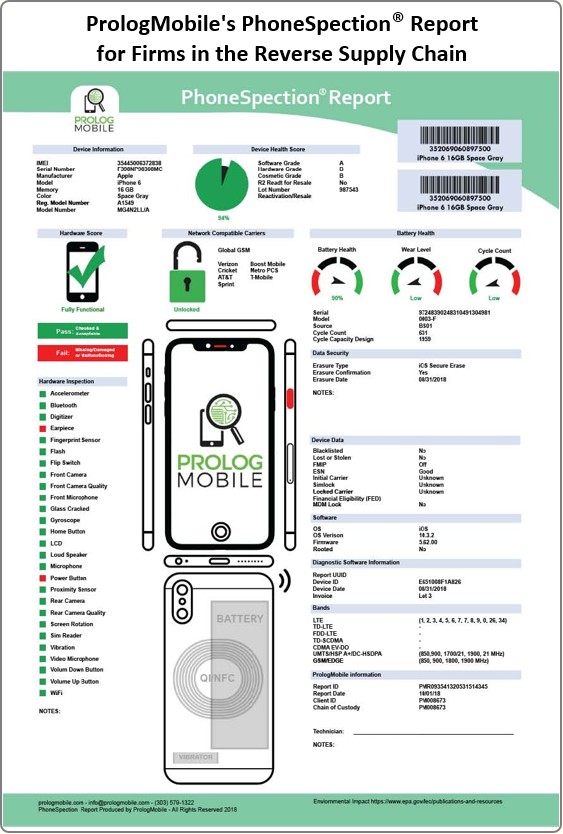
Click the image above to see it full-screen
And knowledge prevents problems. For instance, if you buy a used phone on eBay, the seller may have no idea whether the phone he sold to you is locked onto Sprint or not; they also do not know which carriers the device will work on. Then, if the buyer wants to use it on AT&T and he can’t do that, he gets angry at the seller and eBay.
Our system creates transparency around IMEIs. And then, since we integrate with the erasure and diagnostic companies, we can look at the overall “health” — if you will — of a phone, we can look at the hardware status, how well the buttons work, does the screen work, does the battery work? There are between 60-75 parts in every mobile phone — they’re incredibly complex.
We help all the players in the used mobile device space organize their inventory. So, you can sell your phones to somebody who is looking for AT&T stuff and only AT&T stuff — the same goes for Sprint, Verizon or T-Mobile inventories
| What’s going to happen as 5G devices get popular on the market? |
Well, our system is agnostic as to the network topology of the phone, whether it is GSM or CDMA or LTE. And when 5G arrives, the speed of 5G is going to completely change the global market for used mobiles because everybody will want to change their phones to get 5G capability — the service is that compelling.
And carrier losses in their phone investments are going to accelerate as everybody starts getting rid of their old, slower phones. So carriers need to get ahead of this reverse supply chain issue.
| Thanks for this nice briefing, Seth. I love the way PrologMobile is adding value at multiple levels and for lots of players in the reverse supply chain — and for consumers. And you’re enabling the used phone market to become far more efficient. |
Thanks, Dan. I got into this business almost 20 years ago because I was watching somebody at a BellSouth Store destroy used phones with a hammer and throw them into a dumpster. That caused me to look into what’s in a phone — and the answer at the time was lead, cadmium, mercury — all kinds of carcinogens and even some gold.
I then started a company named CollectiveGood to help people start recycling phones and we became one of the biggest companies in the world for recycling phones. I ultimately sold that company to an organization that became HYLA Mobile who now traffics about 6 billion dollars’ worth of used phones a year.
So this remains very important to me. We need to stop throwing electronics into landfills where they are poisoning our water tables. Or said another way: who in their right mind throws gold in the garbage can? That can never be an intelligent decision.
When a phone is at the end of its lifecycle it’s almost surely worthwhile for somebody at the right price point to buy that phone and tear it down for parts and reuse those parts, or recycle the device for its metals — they can capture 17 metals from a smartphone and reuse them infinitely.
So at PrologMobile we’re still helping keep phones out of landfills, optimizing their lifecycles, and protecting the environment. And this mission benefits OEMs, carriers, and consumers. There is no victim in this entire thing. Everybody wins, I love that.
Copyright 2019 Black Swan Telecom Journal
About the Experts
Black Swan Solution Guides & Papers
- Expanding the Scope of Revenue Assurance Beyond Switch-to-Bill’s Vision — Araxxe — How Araxxe’s end-to-end revenue assurance complements switch-to-bill RA through telescope RA (external and partner data) and microscope RA (high-definition analysis of complex services like bundling and digital services).
- Lanck Telecom FMS: Voice Fraud Management as a Network Service on Demand — Lanck Telecom — A Guide to a new and unique on-demand network service enabling fraud-risky international voice traffic to be monitored (and either alerted or blocked) as that traffic is routed through a wholesaler on its way to its final destinations.
- SHAKEN / STIR Calling Number Verification & Fraud Alerting — iconectiv — SHAKEN/STIR is the telecom industry’s first step toward reviving trust in business telephony — and has recently launched in the U.S. market. This Solution Guide features commentary from technology leaders at iconetiv, a firm heavily involved in the development of SHAKEN.
- Getting Accurate, Up-to-the-Minute Phone Number Porting History & Carrier-of-Record Data to Verify Identity & Mitigate Account Takeovers — iconectiv — Learn about a recently approved risk intelligence service to receive authoritative and real-time notices of numbers being ported and changes to the carrier-of-record for specific telephone numbers.
- The Value of an Authoritative Database of Global Telephone Numbers — iconectiv — Learn about an authoritative database of allocated numbers and special number ranges in every country of the world. The expert explains how this database adds value to any FMS or fraud analyst team.
- The IPRN Database and its Use in IRSF & Wangiri Fraud Control — Yates Fraud Consulting — The IPRN Database is a powerful new tool for helping control IRSF and Wangiri frauds. The pioneer of the category explains the value and use of the IPRN Database in this 14-page Black Swan Solution Guide.
- A Real-Time Cloud Service to Protect the Enterprise PBX from IRSF Fraud — Oculeus — Learn how a new cloud-based solution developed by Oculeus, any enterprise can protect its PBX from IRSF fraud for as little as $5 a month.
- How Regulators can Lead the Fight Against International Bypass Fraud — LATRO Services — As a regulator in a country infected by SIM box fraud, what can you do to improve the situation? A white paper explains the steps you can and should you take — at the national government level — to better protect your country’s tax revenue, quality of communications, and national infrastructure.
- Telecom Identity Fraud 2020: A 36-Expert Analysis Report from TRI — TRI — TRI releases a new research report on telecom identity fraud and security. Black Swan readers can download a free Executive Summary of the Report.
- The 2021 State of Communications-Related Fraud, Identity Theft & Consumer Protection in the USA — iconectiv — This 49-page free Report on communications-related fraud analyzes the FTC’s annual Sentinel consumer fraud statistics and provides a sweeping view of trends and problem areas. It also gives a cross-industry view of the practices and systems that enable fraud control, identity verification, and security in our “zero trust” digital world.
Recent Stories
- Epsilon’s Infiny NaaS Platform Brings Global Connection, Agility & Fast Provision for IoT, Clouds & Enterprises in Southeast Asia, China & Beyond — interview with Warren Aw , Epsilon
- PCCW Global: On Leveraging Global IoT Connectivity to Create Mission Critical Use Cases for Enterprises — interview with Craig Price , PCCW Global
- Subex Explains its IoT Security Research Methods: From Malware & Coding Analysis to Distribution & Bad Actor Tracking — interview with Kiran Zachariah , Subex
- Mobile Security Leverage: MNOs to Tool up with Distributed Security Services for Globally-Connected, Mission Critical IoT — interview with Jimmy Jones , Positive Technologies
- TEOCO Brings Bottom Line Savings & Efficiency to Inter-Carrier Billing and Accounting with Machine Learning & Contract Scanning — interview with Jacob Howell , TEOCO
- PRISM Report on IPRN Trends 2020: An Analysis of the Destinations Fraudsters Use in IRSF & Wangiri Attacks — interview with Colin Yates , Yates Consulting
- Telecom Identity Fraud 2020: A 36-Expert Analyst Report on Subscription Fraud, Identity, KYC and Security — by Dan Baker , TRI
- Tackling Telecoms Subscription Fraud in a Digital World — interview with Mel Prescott & Andy Procter , FICO
- How an Energized Antifraud System with SLAs & Revenue Share is Powering Business Growth at Wholesaler iBASIS — interview with Malick Aissi , iBASIS
- Mobileum Tackles Subscription Fraud and ID Spoofing with Machine Learning that is Explainable — interview with Carlos Martins , Mobileum


